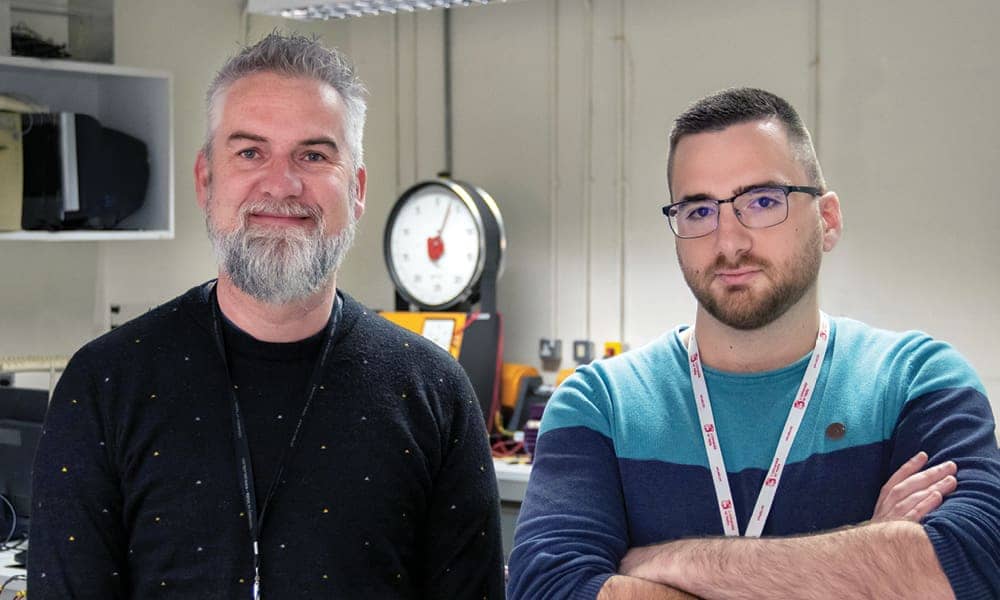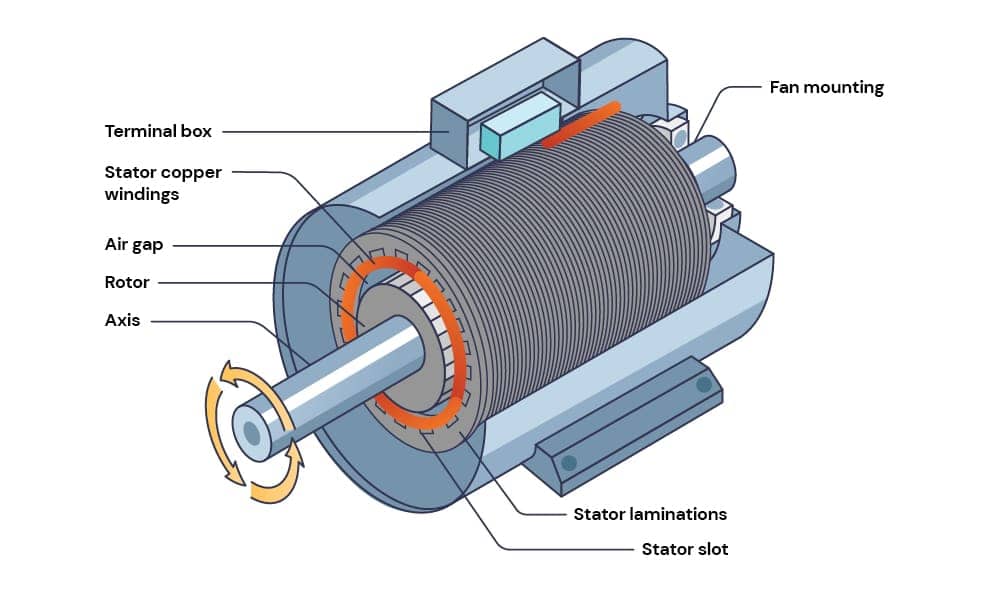The climate crisis urges us to use every means of reducing CO2 emissions. To reduce the energy consumption of electrical drive applications, researchers from the Faculty of Engineering at the University of Malta are working on a hybrid inverter drive. This device will be able to adjust the power input to an electric motor, thus avoiding power losses. With 8 billion electric motors in the EU alone, even small energy savings can scale up to big contributions towards a sustainable future.
Human activity needs to become more efficient if we want to stand a chance against the climate crisis. Sources of renewable energy are growing, but they are only one part of avoiding CO2 emissions. Another piece of the puzzle that leads to zero net emissions is reducing energy consumption. One way to do so is by rendering machines in such a way that they deliver the same task but require less energy. In other words: make them more efficient.
Efficiency is a term that is used in a variety of contexts. Generally, it describes the ratio of output to input. Applied to electrical drive applications, it describes the mechanical energy generated divided by the electrical input energy. In reality, there are always some energy losses along the way, but the closer this number comes to one (where energy output equals the energy input), the less electrical energy is needed for the same task.
In the EU, there are about 8 billion electric motors. About half of all the energy consumed in the EU goes into running them. With so many opportunities for application, even relatively small improvements in energy efficiency can scale up to save vast amounts of energy. Dr Ing. Reiko Raute and doctoral student and researcher Daniel Lendi from the Faculty of Engineering at the University of Malta are working on a device that reduces the energy consumption of electrical motor applications. They are improving the design of variable frequency drives. Connected to an electric motor, these devices can adjust the frequency of the motor’s voltage and thus change the motor speed, thereby matching the load’s or application’s needs as closely as possible and bringing them closer to perfect efficiency.

Induction Motors and Electrical Frequency
To understand how a device that adjusts the frequency of the electrical current can improve the efficiency of an electric motor, it is unavoidable to deal with some of the technical basics of electricity. ‘In our project, we focused on the most common type of motors for many applications in industry,’ Raute points out, ‘induction motors.’ In their simplest form, induction motors use electrical current to create a changing electromagnetic field in its stationary part, the stator. This changing or rotating electromagnetic field induces (hence ‘induction’ motor) a current in the motor’s rotating part, the rotor. It is the interaction between the stator’s rotating electromagnetic field and the current in the rotor that creates a rotational force, known as torque. Thus, electrical power is converted to mechanical power. Raute adds, ‘Induction motors are also called fixed-speed-motors, because the speed of the rotating movement is determined solely by the electrical input frequency.’

In electricity, the term frequency is closely tied to the concept of alternating current (AC). Electricity consists of electrons that run from the negative to the positive pole. In an alternating current, which is nowadays standard, the poles switch at a high rate. Along with them, the electrons switch their running directions. The rate at which the switching happens is called the frequency. Frequency is measured in Hertz (Hz), which describes the number of changes per second. In Europe, the frequency of the mains electrical power grid is 50Hz.
To run induction motors at different speeds, there must be something between the grid (which is fixed at 50Hz) and the motor (the speed of which is determined by the incoming frequency) that can change the frequency. This is where variable frequency drives come in.
Variable Frequency Drives
‘Variable frequency drives are devices that change the frequency of the electrical current,’ Lendi explains. ‘They can thus also change the speed of an induction motor.’ This feature becomes highly important in machines that run long hours at different speeds. ‘For instance, ventilation units at airport terminals are a very good example for the application of variable frequency drives,’ Raute adds. ‘An airport terminal is ventilated all the time, but at night hours, the required air ventilation is lower than at day,’ Raute tells. ‘To reduce the air flow at night, flaps were usually used as an air-block while the motors driving the fans ran at full speed. This system was obviously very inefficient, because the motors ran at full power/speed when it wasn’t needed. That’s why these days, variable frequency drives are installed for terminal ventilation units,’ he elaborates. ‘The use of the variable speed drives enables the system to actually let the fan run slower at night instead of blocking the air current. The power loss due to the inefficient way of blocking the air flow at night was averted.’
Variable frequency drives solved one problem, but they created another one: during the day, when the air conditioning runs at full speed, the drives are still active, although all they do is convert the 50Hz grid frequency to a 50Hz frequency to feed the motor. This unnecessary power conversion results in a power loss of approximately 3%. While the variable frequency drive can help to increase the application efficiency at some operation points by reducing the motor speed, it becomes redundant once the motor is running at full speed for a long time. 3% doesn’t sound like a lot, but the same issue applies to many motors. Remembering the vast amount of induction motors all over the world, the small effect sums up to giant energy losses.
To avoid the energy loss when the motors are running at full speed (50Hz), Raute and Lendi are creating a hybrid inverter drive that can be bypassed when it’s not needed.
The Hybrid Inverter Drive
The hybrid inverter drive (HID) is a variable frequency drive that adds the feature of being able to take itself out of the electrical circuit. ‘When the induction motor runs at low speed, the hybrid inverter drive changes the frequency of the motor voltage. However, when the motor runs on the full 50Hz of the power grid, the HID’s inverter drive is bypassed.’ Bypassing the inverter saves the 3% energy loss that a common variable frequency drive can’t avoid.
There are many applications in industry that could benefit from the hybrid inverter drive. With most pumps, compressors, and air conditioning systems run by induction motors, the device can have a huge effect once it is implemented on a large scale. By improving the energy efficiency of many electrical drives by a small amount, the hybrid inverter drive contributes to the goal of zero CO2 emission in a different way than wind farms and solar panels. The device that these Maltese researchers are building can’t generate renewable energy, but it can save us from wasting energy in the first place!





Comments are closed for this article!